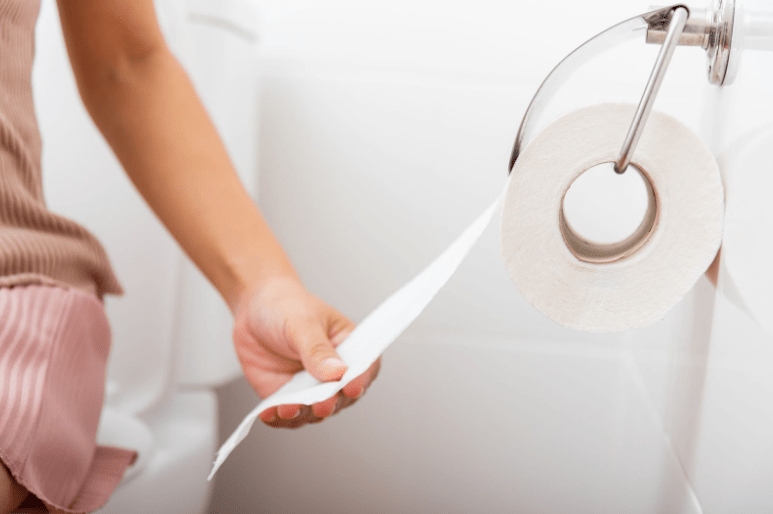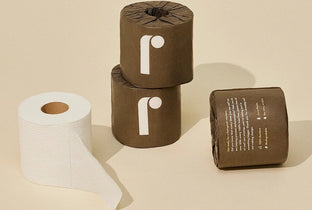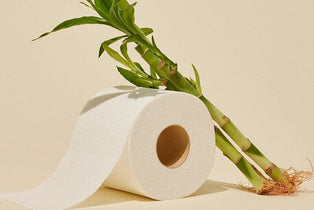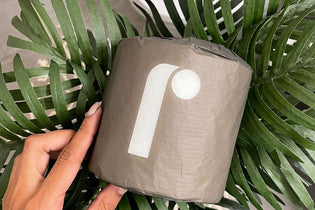
TLDR
Even the smallest decisions can have a significant impact on the quest for a sustainable lifestyle. One such decision is what to do with toilet paper after use. Is it better to flush or throw away toilet paper?
In this article, we will discuss the consequences of both actions and explore alternative solutions that are kinder to our planet.
Environmental Impact of Flushing Toilet Paper
Flushing toilet paper is the most common practice, but its environmental impact is substantial. Many people are unaware of the extensive processes involved and the long-term effects this simple action can have on our water systems.
Water Treatment Process
When we flush toilet paper, it travels through sewer pipes to a sewage treatment plant. Here, wastewater undergoes several stages of treatment to remove contaminants and purify the water.1 Although toilet paper is designed to break down in water, the process isn't instantaneous. It requires significant energy and resources to treat and remove toilet paper from the wastewater.
This process contributes to a considerable amount of waste and requires the use of tap water, further straining our water resources. The chemicals and energy used in these treatment plants add to the overall environmental footprint.
Impact on Sewage Systems
Toilet paper can also cause plumbing issues. When too much toilet tissue accumulates, sewer systems, especially older ones, can get clogged.2 This can lead to sewer backups, causing significant damage to homes and infrastructure. Regular toilet paper, non-toxic toilet paper, and flushable wipes can all contribute to these problems.
Also, items that should never be flushed, like baby wipes, dental floss, sanitary napkins, and tampons, can worsen these issues, leading to clogged toilets and strained plumbing systems. These plumbing problems can result in costly repairs and environmental harm due to the overflow of untreated wastewater.
Environmental Impact of Throwing Away Toilet Paper
On the other hand, throwing away toilet paper poses its own environmental challenges. Although disposing of toilet paper in the trash may seem like a more controlled way to manage waste, it has drawbacks that need careful consideration.
Landfill Contributions
When toilet paper is disposed of in the trash, it ultimately ends up in landfills. Household paper products, including facial tissue, paper towels, and traditional toilet paper, contribute to the growing volume of waste in landfills.
Once there, these materials take up space and contribute to the mounting problem of landfill overflow. Landfills are already struggling to manage the vast amounts of waste produced daily, and adding more paper products only worsens the situation.3 The space consumed by paper products could be used for other types of waste that are more difficult to recycle or repurpose.
Decomposition and Methane Production
Another critical issue with throwing away toilet paper is the decomposition process. In a landfill, organic materials like toilet paper decompose anaerobically (without oxygen), leading to the production of methane gas. Methane is a potent greenhouse gas, significantly more impactful on climate change than carbon dioxide.4 Thus, throwing away toilet paper not only fills up landfills but also contributes to global warming through methane emissions.
Alternative Solutions
Given the environmental impact of both flushing and throwing away toilet paper, it's crucial to explore alternative solutions that can mitigate these issues. These alternatives not only address the problem at its source but also offer more sustainable options for everyday use.
Bamboo Toilet Paper
Bamboo toilet paper is an excellent alternative to traditional toilet paper. Bamboo is a highly sustainable resource, growing much faster than trees. It is also biodegradable and breaks down more quickly than traditional toilet paper, making it a more eco-friendly option.
By switching to bamboo toilet paper, we can reduce the environmental impact associated with the production and disposal of regular toilet paper. Additionally, bamboo toilet paper like ours is free from harsh chemicals, making it the best toilet paper for sensitive skin and the environment.
Using a Bidet
Using a bidet is another effective way to minimize the environmental impact of toilet paper. Bidets use a stream of water to clean, significantly reducing the need for toilet paper. This method not only decreases the volume of toilet paper entering sewage systems or landfills but also conserves the resources needed to produce and treat toilet paper. Learn more about toilet paper vs bidet in our blog.
Moreover, pairing eco-friendly toilet paper and bidets can be more hygienic and gentle on the skin and offer a superior cleaning experience. The initial investment in a bidet can lead to long-term savings on toilet paper and reduce your household's overall waste.
Reusable Cloth Toilet Paper
For those looking to minimize waste further, reusable cloth toilet paper is an option. These washable cloths can be used, washed, and reused multiple times, drastically reducing the amount of disposable paper products used in a household. While this option requires a bit more effort and maintenance, it significantly lowers the environmental impact of toilet paper use.
Verdict on Flushing vs. Throwing Away Toilet Paper
At the end of the day, the best option is to flush toilet paper. While both flushing and throwing away toilet paper have environmental impacts, flushing is generally more sustainable and manageable for most households. Toilet paper is designed to break down in water, making it easier for wastewater treatment plants to process and dispose of safely.

Making an Eco-Friendly Choice with Reel Paper
Whether you flush or throw away toilet paper, both options have environmental drawbacks. However, by exploring and adopting traditional toilet paper alternatives like bamboo toilet paper, bidets, and reusable cloth toilet paper, we can significantly reduce our environmental footprint. Reel Paper is here to support you in making these eco-friendly choices, providing sustainable options that benefit both you and the planet.
When it comes to making an eco-friendly choice, Reel Paper provides sustainable toilet paper solutions. Our bamboo toilet paper is not only soft and durable but also environmentally friendly. By choosing Reel Paper, you're opting for a product that supports sustainability from production to disposal.
Sources:
- Membracon. What is a Sewage Treatment Plant & How does it work?. https://www.membracon.co.uk/blog/what-is-a-sewage-treatment-plant-how-does-it-work-2/
- PPM Plumbing. Can Too Much Toilet Paper Clog My Sewer Line?. https://www.ppmplumbing.com/blog/can-too-much-toilet-paper-clog-my-sewer-line
- Balticfloc. THE PROBLEM OF WASTE PAPER IN EUROPEAN COUNTRIES. https://www.balticfloc.lv/en/blogs/the-problem-of-waste-paper-in-european-countries/
- Environmental Defense Fund. Methane: A crucial opportunity in the climate fight. https://www.edf.org/climate/methane-crucial-opportunity-climate-fight





0 comments